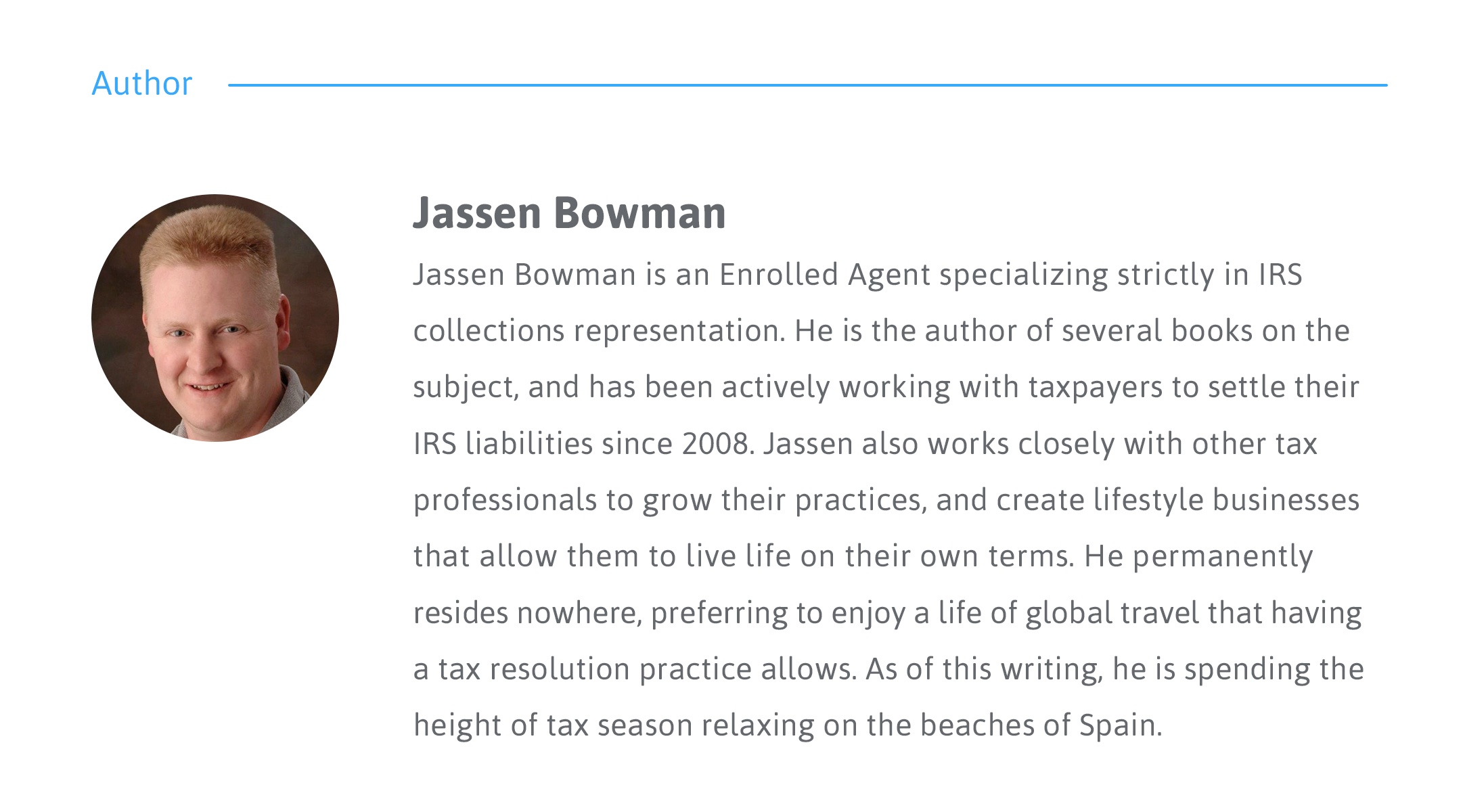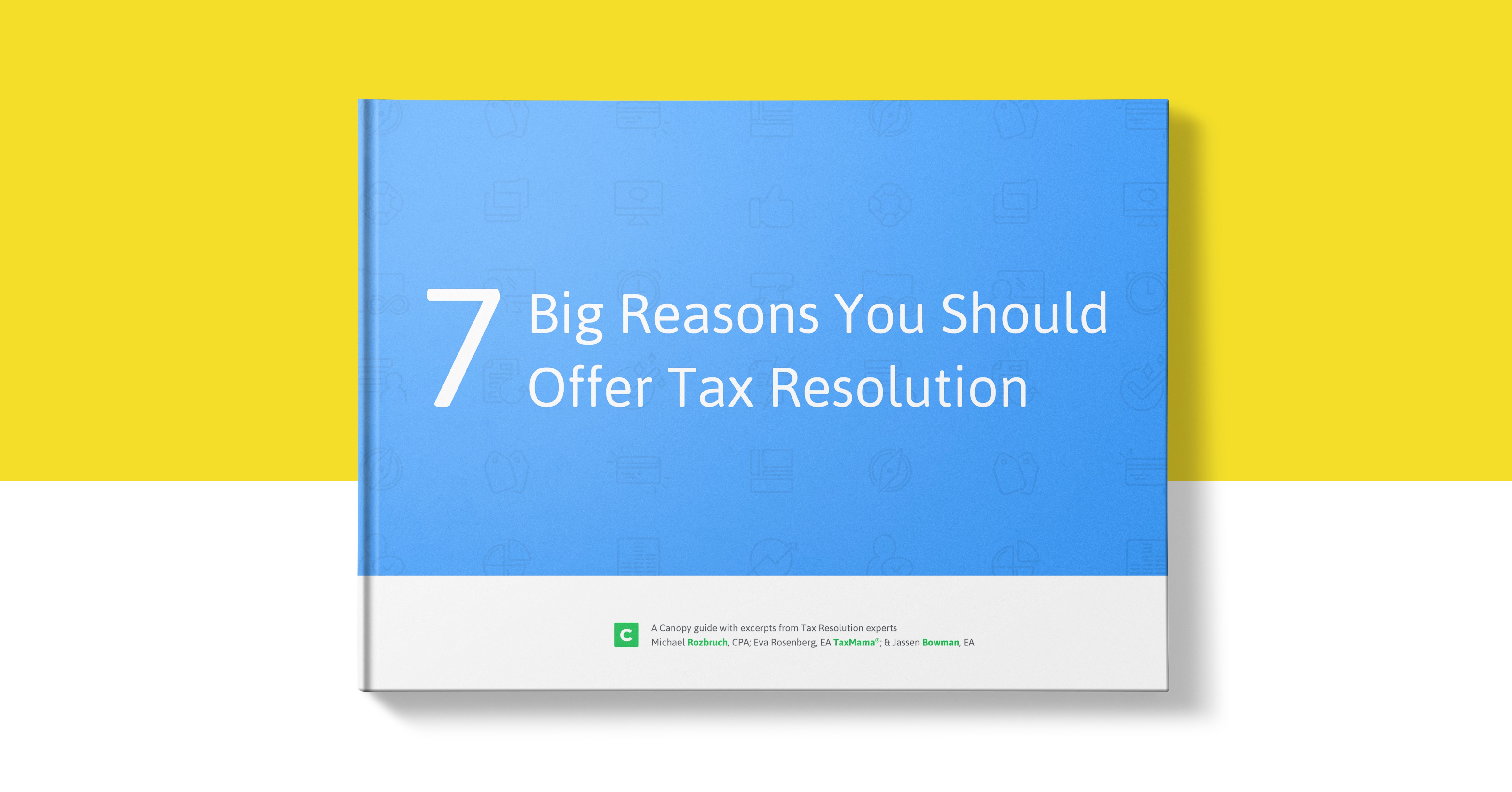One of the most common challenges faced by tax practitioners is how to maintain, or even grow, their monthly revenues after the close of tax season. Adding tax resolution services to your practice is one of the best ways to generate substantial revenue year-round.
Avoiding the seasonal revenue roller coaster
For the past three years, I’ve been screaming from the rooftops about adding lucrative tax resolution services to your existing tax, legal, or accounting practice. For any licensed CPA, attorney, or Enrolled Agent, tax resolution offers the opportunity to add massive amounts of revenue to your bottom line. But even more importantly, this highly in-demand service offers you a leveraged method to remove yourself from the seasonal revenue roller coaster that most tax professionals choose to ride.
When I talk about tax resolution, I’m specifically referring to representing taxpayers that are facing actions from IRS and state tax collection divisions. The majority of tax resolution cases involve unpaid individual income taxes, or unpaid payroll taxes for businesses. Most tax resolution cases are resolved through some sort of payment plan being established with the taxing authority, although other situations exist in which the tax liability is settled for less than the full amount, or deemed non-collectible entirely.
Charging up to $500/hour
Taxpayer representation involves specific skill sets. These skills command higher hourly fees than most other types of work that tax professionals engage in. Hourly fees ranging from $175 to over $500 per hour are not uncommon, and cases fees often average in excess of $3,500 per client.
Where to begin
So how does a tax professional get involved in this lucrative field of practice?
First, only licensed practitioners can represent taxpayers. Generally, this means you must be an active CPA, attorney, or Enrolled Agent in order to practice in this field.
Second, it is important that you obtain specialized training specific to tax resolution. Since collections representation is a unique animal that most tax professionals are never exposed to, it is necessary to obtain competent training in this field. Popular options include the NTPI courses offered by the NAEA, the in-person seminars offered by the ASTPS, and my own Tax Resolution Mastery Course.
Third, you must engage in specific marketing activities to find tax resolution clients. The remainder of this article will discuss tips for finding these high-fee paying clients.
Finding high-fee paying clients—Marketing, PR, and more
First and foremost, look within your existing client base for potential tax resolution clients. As we roll out of tax season, take a look at the tax returns that you prepared this year. Did you prepare returns with a substantial balance due that your client may not be able to pay? Did you speak with prospective clients with multiple years of unfiled returns? Do you have payroll or bookkeeping clients that have unpaid liabilities?
Next, look to your professional peer network. Tax resolution is a very specific practice area that most practitioners simply choose not to engage in. According to the NAEA, less than 2% of Enrolled Agents offer any sort of representation services. According to the AICPA, only around 10% of licensed public accountants indicate that they offer such services. Attorneys usually practice in very specific areas of the law, making some of them great referral sources. Establishing relationships with Enrolled Agents and CPAs, as well as real estate attorneys, estate attorneys, probate attorneys, and even tax attorneys can all be very fruitful in terms of generating client referrals. Work to actively maintain such professional relationships, and let it be known that you are looking for tax debtors to work with.
Don’t neglect the power of public relations and establishing yourself as an expert. Become the go-to tax person for local TV and radio stations. Write a column for your local newspaper or business journal. Hone your public speaking skills with Toastmasters, and make yourself available as a speaker for local business groups, civic organizations, real estate offices, and financial services companies. All of these activities put you in front of people that might potentially need your assistance, and also boosts your reputation and credibility. One of the best things I ever did for my own tax practice was to write my first book, “Tax Resolution Secrets”. Today, this is the best selling IRS problem resolution book on Amazon, and results in at least a few new prospective leads contacting me directly each month.
In this day and age, it’s important to have an effective online lead generation strategy working for you. Make sure that, if nothing else, you have a tax resolution page on your web site, if not a specific web site dedicated entirely to the topic. Offer something of value to visitors, such as a free report, copy of a book, or attendance on an educational webinar, in order to help you collect leads which you can then stay in touch with over time to convert to paying clients.
Lastly, but definitely not least, give consideration to doing tax lien marketing in your local area. Federal and state tax liens are a matter of public record, and these records can be gathered from local public record sources, or you can purchase lien lists from most mailing list brokers or specialized services such as taxlienshq.net. Determine the specific type of client you want to obtain from your marketing efforts, and then choose tax liens that are most likely to bring you such ideal clients. Then, conduct multi-step sequential direct mail campaigns to those tax liens, using combinations of letters and postcards, in order to contact them. Best results are obtained by also placing follow up telephone calls to these liens (be aware of Do Not Call Lists and other regulatory matters pertaining to calling). A consistent, intelligent direct response marketing strategy can be worth it’s weight in platinum for the tax resolution practitioner.
By combining all marketing approaches discussed here into a cohesive strategy, it is not uncommon for a tax professional to generate several new clients per month. With clients fees in the $3,000 to $5,000 range, or even more, you can quickly add one client per week to your practice, yielding $12,000 to $20,000 and up per month to your practice. On top of that, tax resolution clients, once “fixed," become clients for life, bringing you additional revenue for other services for years and years to come.
Using Canopy, you can manage this case volume quite easily, even without supporting staff. Using Canopy to coordinate your schedule, you can make sure cases stay on track and eliminate the time-consuming manual labor of paper files. You can successfully handle more cases (and thus bring in more revenue) than you could without Canopy.
If you’re interested in learning more about employing cutting edge marketing strategies to grow your tax resolution practice, please visit Tax Marketing HQ.
Now that you're convinced you should offer tax resolution at your firm, learn how to price your tax resolution services.








Get Our Latest Updates and News by Subscribing.
Join our email list for offers, and industry leading articles and content.